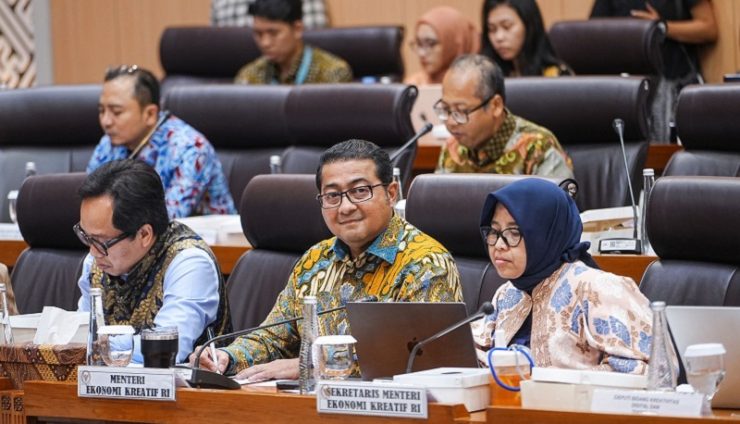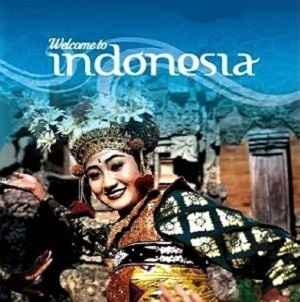THE MINISTRY of Creative Economy (Ekraf) submitted a budget of IDR2.34 trillion for the 2026 Creative Economy Program to achieve a GDP growth target of 6.12% and create 27.66 million jobs. The budget will strengthen the strategy of developing seven leading subsectors, including fashion and film.
Minister Teuku Riefky Harsya of the Ministry of Creative Economy conveyed this information during a working meeting with the House of Representatives (DPR) Commission VII concerning the government work plan (RKP) and the ministry’s budget plan for 2026. The meeting took place on Wednesday, (07/9), 2025, in the Nusantara 1 building of the Jakarta DPR/MPR Complex.
“We need the support of the Indonesian Parliament regarding additional proposals through the Ministry of Creative Economy’s new initiative for 2026 in order to run the creative economy program effectively and implement public services to realize the creative economy as a new engine for national economic growth, starting from the regions,” said Minister Teuku.
The Ministry of Creative Economy is committed to achieving the cascading of the creative economy structure in the national medium-term development plan (RPJMN) 2025-2029. The Minister of Creative Economy is trying to realize the third point of President Prabowo’s Asta Cita, namely increasing quality employment, encouraging entrepreneurship, and developing creative industries.
Regarding the strengthening of the creative economic ecosystem based on intellectual property, the Ministry of Creative Economy seeks to increase the competitiveness of the creative economy. The target and indicators of priority programs in 2029 are as follows: a 6.12% growth rate for Ekraf GDP, a 5.96% growth rate for Ekraf exports, 27.66 million for Ekraf labor, and an 8.08% growth rate for creative economic investment.
“Of course, our activities include strengthening ecosystems in seven priority subsectors, such as culinary arts, crafts, fashion, gaming, applications, music, film, animation, and video,” Teuku Riefky added, giving a presentation to the legislator as a follow-up to the previous meeting on June 26, 2025.
Furthermore, the Minister of Creative Economy explained the strategy for implementing a creative economy program that utilizes the budget effectively and efficiently to run the planned programs.
“The ministry has developed a strategy to guide the implementation of creative economy programs, such as developing priority subsectors based on growth potential and in line with development trends, developing intellectual property ecosystems, accelerating craft exports, especially intangible products, strengthening and encouraging crafts connected to other sectors, and developing crafts in 15 priority provinces with the highest potential,” said the Minister.
In response to the presentation, the chairman of the meeting, Rahayu Saraswati Djojohadikusumo, stated at the conclusion of the meeting that the House of Representatives Commission VII approved the additional budget proposal. The legislator, familiarly called Saras, urged the Ministry of Creative Economy to submit supporting data for the additional budget proposals immediately. Additionally, the Creative Economy Ministry is expected to follow up on input from several Commission VII members discussed during the meeting.
“We hope that the Ministry of Creative Economy can increase the competitiveness of Ekraf activists, especially in the digital subsectors. We also hope that they can increase training and technical guidance activities for Ekraf human resources in the use of artificial intelligence-based technology and increase creativity in designing activities for creative economic growth,” Saras affirmed.
Additionally, Saras believes that the Ministry of Creative Economy can optimize its cooperation with local governments and other stakeholders to develop the creative economy in regions.
“There are many Ekraf activists in creative regions, so we hope the creative economy will develop from these regions. The ministry can design activities to recognize and appreciate Indonesian animators who have contributed to international animation media. Additionally, the ministry can leverage regional resources to support the growth of the creative economy, particularly in the realm of cultural creativity and performance arts,” Saras concluded. [traveltext.id]
















